The biggest OHV open tract of sand in the country, the Imperial Sand Dunes Recreation Area is part of a huge sand sea, more broadly known as the Algodones Dunes, which extend into Mexico. More than 118,000 acres of the fantastic formation, some of which rise to 300 feet tall, are open to off-roaders. The main off-roading area is south of Highway 78 and given the scorching summer temperatures, prime time riding season is between fall and spring.
The most extensive dune field in the Silver State, the Winnemucca Dunes runs nearly 40 miles and boasts a great desert-mountain backdrop. Off-roading is allowed on the majority of this mixture of Bureau of Land Management land and private land.
The Oregon Dunes National Recreation Area lies within the largest coastal dune sheet in the U. S., which lines the Pacific margin along the Beaver State’s central and southern shore. Here you can find striking sand barrens interweave with pockets of temperate rainforest, offering a unique landscape for dune-ready ATV and UTV riders. During the summer, fog is common which often reduces visibility, but enhances the overall maritime atmosphere.
Gleaming quartz grains heaped up to 400 feet high draw four-wheeler and side-by-side riders to the St. Anthony Sand Dunes, also known as the Idaho Dunes. Among the defining features are the spectacularly steep Choke Cherry Dune and the nearby Dead Horse Bowl.
At roughly 2,000 acres, the Hot Well Dunes is not a large sand-riding area in size, but it is a fun one. It has one major dune with numerous peripheral sand tracks and tubs fed from the hot artesian wells that make for a great post-ride soak.
About 60,000 acres of open dunes mixed with sagebrush and juniper define this outstanding Bureau of Land Management area in central Utah’s Sevier Desert.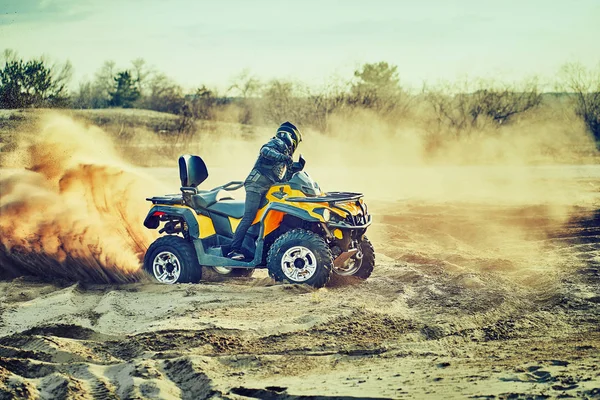 The plentiful sand, which comes sourced from the vanished Pleistocene Lake Bonneville, provides some of the best dune-riding in the Intermountain West. Popular areas include the well-developed and varied trails of Black Mountain and the low-slung, beginner-friendly dunes south of it, but the pinnacle is Sand Mountain: a 700-foot-tall dune posing an alluring challenge to even experienced riders.
The plentiful sand, which comes sourced from the vanished Pleistocene Lake Bonneville, provides some of the best dune-riding in the Intermountain West. Popular areas include the well-developed and varied trails of Black Mountain and the low-slung, beginner-friendly dunes south of it, but the pinnacle is Sand Mountain: a 700-foot-tall dune posing an alluring challenge to even experienced riders.
Nearly 1,600 acres of sand dunes, derived from ancient deposits of the Cimarron River, offer some of the best ridings in the central U.S., at the aptly named Little Sahara State Park. While the dunes top out around 75 feet, this site offers an extensive playground for ATV, UTV, and dune buggy.
The only sand dunes east of the Mississippi River open to off-road vehicles await at Silver Lake State Park along Lake Michigan. There is a 450-acre off-road scramble area with quite the stunning backdrop.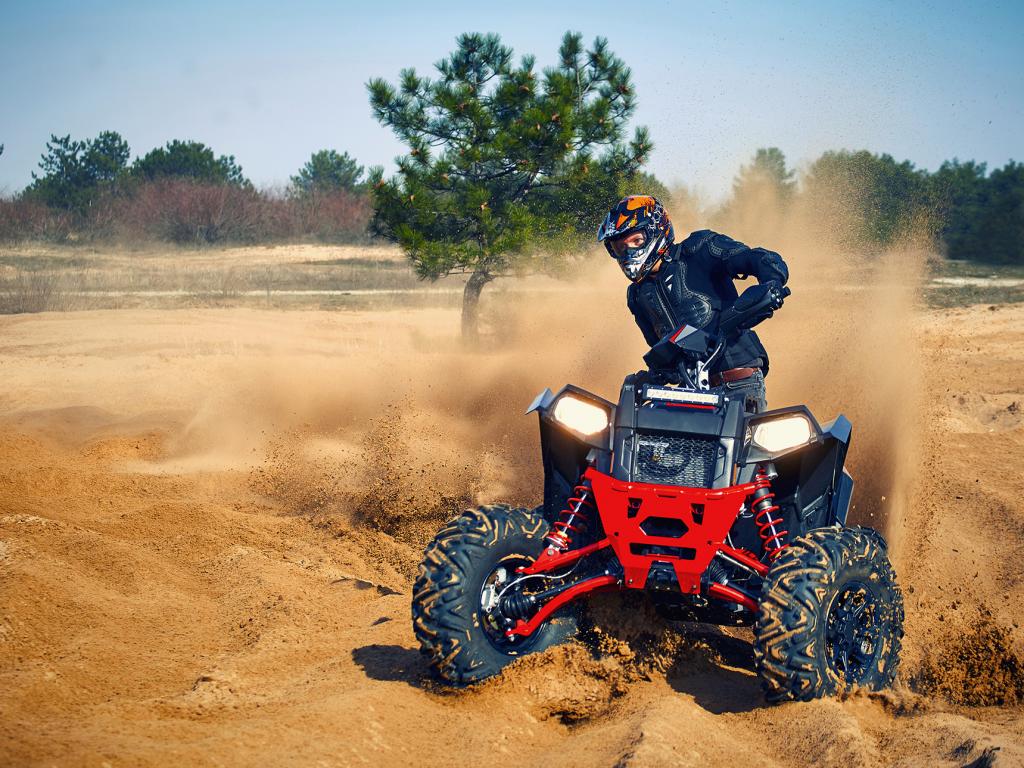
With the right techniques, the right tires, and the right mindset, the sand dunes of the U.S. offer incredible off-roading adventures. While not comprehensive, the above lineup of top-grade SxS and ATV sand dunes gives you a starting point to plan your next adventure. Here's to plenty of sand spraying in your near future!
Sand riding is one of the funnest ways to enjoy your ATV or UTV. Sand can be tough on your machine though, there are steps to take before a weekend at the dunes to make sure your ATV can handle it. Sand dunes can be found throughout the world, from coasts and plains to desert areas, sand dunes attract a lot of ATV/UTV riders, and for good reason. Here are some things I learned about sand dune riding on an ATV or UTV.
Sand getting into your engine can cause huge problems, it’s always best to prep you machine for sand riding before you hit the dunes.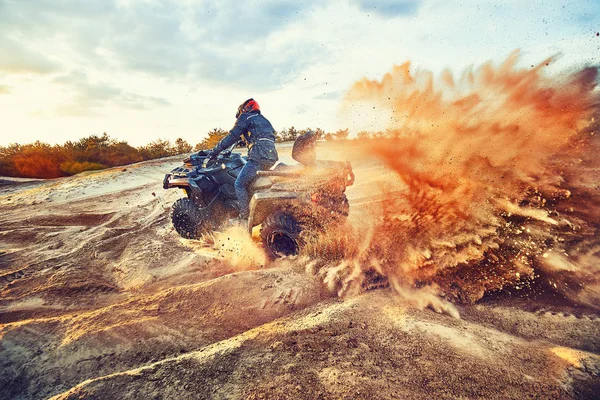 Your tires will spin more than usual in sandy conditions, this puts extra strain on your engine. It’s a lot harder to find traction in the sand than it is on normal packed dirt trails. Of course paddle tires give you excellent traction, but your engine will still be operating harder than usual.
Your tires will spin more than usual in sandy conditions, this puts extra strain on your engine. It’s a lot harder to find traction in the sand than it is on normal packed dirt trails. Of course paddle tires give you excellent traction, but your engine will still be operating harder than usual.
Decreasing the weight of your machine will have huge benefits when riding through sand. A lighter ATV will almost float on top of the sand, and give you better traction when riding. You don’t want to be bogged down by unnecessary weight in the sand dunes. Having a heavy skid plate, for example, will do more harm than good.
You do however, want something like a belly pan skid to prevent your quad for catching on the sand and getting you stuck. Aim to go with lighter weight tires too. If you don’t have paddles tires, at least don’t go with heavy stiff aftermarket tires. They are great at preventing punctures, but terrible in sand, there aren’t to many obstacles that could puncture a tire in the sand dunes anyway. I’ve had good luck with stock lightweight tires in the past.
I’ve had good luck with stock lightweight tires in the past.
It’s always a good idea to keep your quad greased up properly, especially before a sand dunes trip. Make sure your axle carrier is greased up, as well as the swing arm pivot and suspension linkages. It will keep your mind at ease and the quad up to par for the dunes.
I found that while you go through and grease the different parts on your quad, it’s a good time to do a once over of the machine. Check for loose cotter pins, or anything that could be lost in the sand. Tighten up loose nuts and bolts and so on. If you lose a part in the dunes, it’s like trying to find a needle in a haystack.
Getting some fresh oil in your engine will help. You will be working your engine and transmission more than usual, it’s best to keep it protected. Change the oil filter while you’re at it, with a 2-stroke engine your oil should last longer. But in a 4-stroke, I highly recommend changing the oil and oil filter if it’s been a while.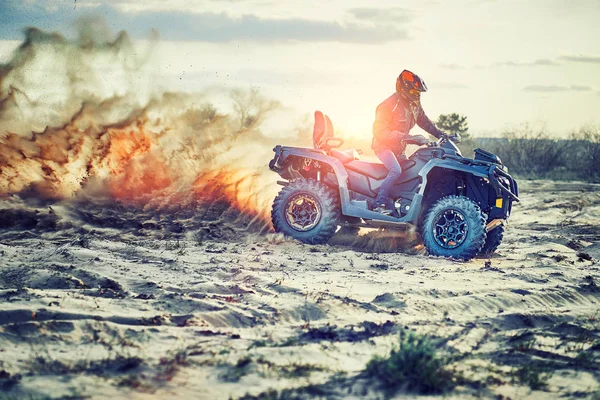
Keep in mind the gear box oil. You also want to make sure your clutch and transmission stay in good shape. If you are good about routine maintenance, you should be fine. But if its been a while since you’ve done any of these things, it’s a good idea to get them done before you go riding in sand.
Last but certainly not least, the air filter. It’s very important to make sure your air filter is clean and oiled up properly. Dust and dirt will get everywhere, your air filter is the only thing protecting your motor from the damaging sand. If you have a flange type air filter make sure to grease the flange, that will prevent sand from getting around the filter and into your engine. If you don’t protect your engine from sand, it will become a costly mistake that’s for sure.
One of the best methods I’ve seen for keeping sand out of your motor is a well oiled K&N filter with a filter charger on it. If you have a fabric type filter, they work great in sand. If you need a new air filter you can find them for almost any ATV online, here is a link to Amazon to get your search started. If your air filter is just too clogged up to clean it all the way, it’s best to just replace it.
If you need a new air filter you can find them for almost any ATV online, here is a link to Amazon to get your search started. If your air filter is just too clogged up to clean it all the way, it’s best to just replace it.
Getting the tire pressure in your tires right makes a huge difference for sand riding. If you have paddle tires, you will already be getting excellent traction. But, I just use regular stock tires set to 3-4 psi. The key here is to get just enough pressure to keep the tire seated on the rim. With a soft tire set to a low psi, your quad will feel like it’s floating through the sand.
It’s also recommended to lower the pressure in paddle tires too. The idea behind this is that with a lower tire pressure your tires create a flat spot where they touch the ground. That creates better traction, and keeps your quad from sinking into the sand.
If you are using a UTV, I would aim for around 8 psi, because UTV’s are heavier than a standard size quad. If you have 14 inch wheels on your UTV, try staying around 10 psi. I wouldn’t go much lower than that unless you have beadlock rims. Beadlock basically holds your tire’s seal better, allowing you to deflate the tires even more without them falling off the rim.
If you have 14 inch wheels on your UTV, try staying around 10 psi. I wouldn’t go much lower than that unless you have beadlock rims. Beadlock basically holds your tire’s seal better, allowing you to deflate the tires even more without them falling off the rim.
Avoid going out in the sand with heavy stiff aftermarket tires. These types of tires are designed to work well on rocky terrain or on a track, but don’t do well in sand. Once you have a tire that works well in sand, and the tire pressure set right, you’ll be floating the dunes in no time.
Paddle tires were made for riding in the sand dunes. An ideal setup would be to have mostly smooth front tires and paddle tires on the rear. There are different types of paddle tires depending on which type of riding you prefer. I enjoy the V-cup paddle tires, which are more for fun, sliding through the sand, and playing in the dunes. But, straight-cup paddles are better for quick straight line racing or hill climbing the dunes.
V-cup paddles allow you to slide more easily through the sand, while straight-cup paddles are better for straight line acceleration. It’s all personal preference here, get the tire that fits your style of riding the most.
It’s all personal preference here, get the tire that fits your style of riding the most.
Things to consider when choosing a paddle tire:
For the front, you can leave the stock tires if you’d like. They work fine, but will throw a lot of sand up, sometimes getting sand in your face. The best solution is a smooth front tire with a single rib down the center, like a mohawk. This type of tire allows you to turn and float on the sand well, and helps keep from kicking too much sand up. They do make completely smooth tires, but you will have a hard time turning with these. They are mostly used for drag racing in sand, where the rider wants as little friction from the front tires on the sand as possible.
Now that you’ve got your ATV sand proofed and the tire pressure set, you’re ready to ride. Even though sand dunes are a pretty safe place to ride, there are some safety precautions to consider. A lot of people like to have these Safety Flags found here on Amazon, or something similar. As always, wear proper safety gear. If you want to check out some tried and tested ATV gear, visit the Recommended Gear section of this site. Better safe than sorry.
Even though sand dunes are a pretty safe place to ride, there are some safety precautions to consider. A lot of people like to have these Safety Flags found here on Amazon, or something similar. As always, wear proper safety gear. If you want to check out some tried and tested ATV gear, visit the Recommended Gear section of this site. Better safe than sorry.
Here’s a list of sand riding tips to help get you started:
 If you are able to keep your momentum up, this can be a ton of fun.
If you are able to keep your momentum up, this can be a ton of fun.
Sand dunes are typically some of the safest places to ride an ATV or UTV. If you ride within your skill level, and follow these safety tips, the likelihood of an accident are pretty low. Still, accidents do happen, so make sure you’re wearing proper safety gear.
It is not recommended to race anywhere within 100 feet of any camp or buildings. Try to keep it under 15 mph as you pass other riders. And most importantly, just use common sense while you’re out there. There’s plenty of space in the sand dunes for racing and jumping without endangering anyone.
Try to keep it under 15 mph as you pass other riders. And most importantly, just use common sense while you’re out there. There’s plenty of space in the sand dunes for racing and jumping without endangering anyone.
Try to ride with a group if you can, if not, at least ride with one other person. Having another set of eyes always comes in handy if something goes wrong. If you’re new to the area, take it slow and scout things out a bit before going balls to the wall.
Here is a list of things worth considering to have with you, with links to Amazon for those items:
Water is last on that list, but it’s one of the most important. You have to stay hydrated out in the sand dunes. You lose a lot of water just normal trail riding, and in the dunes, it’s even worse. Bring some extra water bottles, it’s better than having to cut a riding day short because of dehydration.
Bring some extra water bottles, it’s better than having to cut a riding day short because of dehydration.
Keep watch for holes and indents made in the sand by the wind. Some people call them witches eyes because they are hard to see, and if you hit one, it could throw you off your quad. It’s a bit easier to see if you use tinted goggles, but there’s nothing to block the sun in the dunes.
It’s easy to get lost riding in the sand dunes, and even more so at night. If you’re going to be riding at night, get some bright 12V light bars on your quad, like this LED Light Bar found here on Amazon, if your headlights aren’t going to be bright enough.
That’s it! Sand riding is such a blast, if you prep your ATV or UTV the right way, and follow proper safety procedures, I know you’ll have the time of your life. It’s easy to get hooked riding in the sand dunes, what started as a one time thing to try out, turned into annual long weekend trips for us. Most importantly, have fun floating the dunes!
Sharing is caring!
ATV is a universal animal.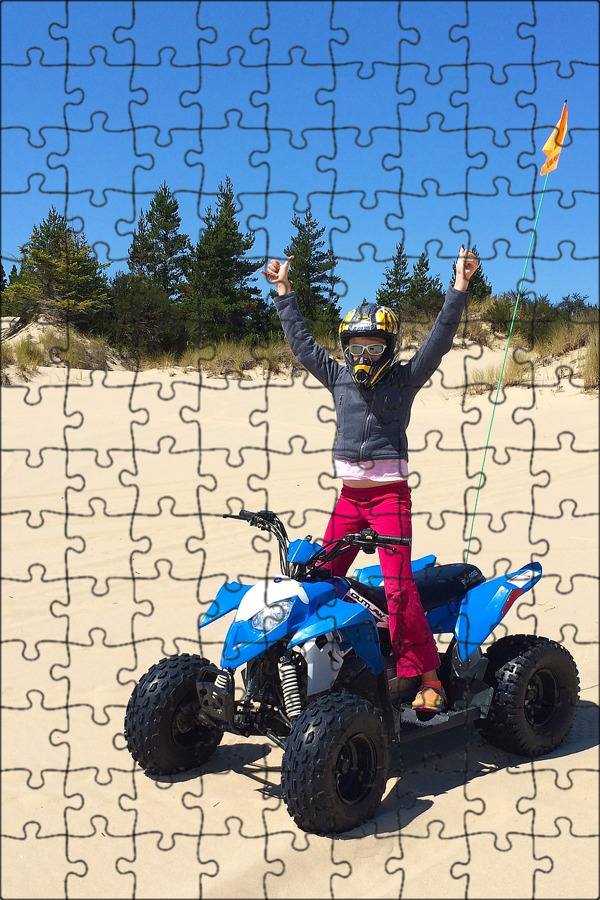 It can be driven both on an ordinary asphalt road and on an impenetrable swamp. Initially, quadras were created specifically to overcome serious obstacles in the form of ice, sand and mud. It will not be difficult for a professional to cover any off-road distance on an ATV, but beginners in extreme riding need to know the main types of obstacles and how to overcome them.
It can be driven both on an ordinary asphalt road and on an impenetrable swamp. Initially, quadras were created specifically to overcome serious obstacles in the form of ice, sand and mud. It will not be difficult for a professional to cover any off-road distance on an ATV, but beginners in extreme riding need to know the main types of obstacles and how to overcome them.
It is also important to choose the right equipment for ATV trips in the suburbs .
All obstacles, such as logs or rocks, up to 2/3 of the ATV wheel diameter can be passed quickly. To do this, you need to turn on the four-wheel drive and lower gear, and then slowly drive up to the desired object. At the same time, you should not sit on the ATV, but stand, firmly hold the handles. Before jerking, lean back, as if “throwing” the front ears onto an obstacle. In the slang of motorcyclists, this technique is called "stand on a goat." After the front ears are on a log or other obstacle, drive off it from the other side, giving a little gas so as not to stop and stall.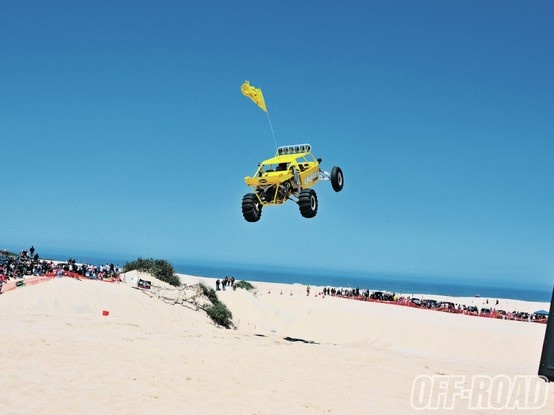 By inertia, you will be thrown over the barrier and you will again find yourself in the original position.
By inertia, you will be thrown over the barrier and you will again find yourself in the original position.
In case you are still stuck in the swamps near Moscow on ATV , you can use a winch or a tug to pull the quad back.
Higher obstacles require two people at once. The ATV should be brought to the obstacle, get off it and throw the front wheels on the edge. At the same time, do not press hard on the gas, as the ATV can become vertical and fall on the back side, picking up the least agile ATVs for itself. For safety, one person climbs onto the quad and puts weight on the front of the car, continuing to work either with gas or with the brake, and the second without strong pressure pushes the quad bike from behind. After overcoming a high object, first the front wheels are lowered, then the rear ones - this will save the ATV from overturning. All these actions require serious physical training, so if possible, still use the winch, and not on your own.
Slopes up to two meters high are handled differently.![]() The technique described below is also used for driving over a bank of earth in a quarry and exiting on a steep river bank.
The technique described below is also used for driving over a bank of earth in a quarry and exiting on a steep river bank.
It is necessary to drive in full drive and low gear. Accurately and carefully approach the slope and try to drive on it with the front wheels. Stand up on the ATV and lean your whole body over the handlebars, leaning on the wings of the rear wheels. Do not stop and drive to the top of the slope with gas.
If the slope is too steep and high, it is better not to take risks here and immediately use the winch. Hook it to something solid at the top of the slope and pull the ATV out. In this case, the driver should not sit on the quadra! Be sure to walk next to the machine, helping the winch with the wheels. Instead of a winch, you can use a climbing rope.
Be careful when overcoming any type of obstacles on difficult roads!
When ordering ATV at KVADR24, you will have a professional instructor with you on the trip who will help you all the way.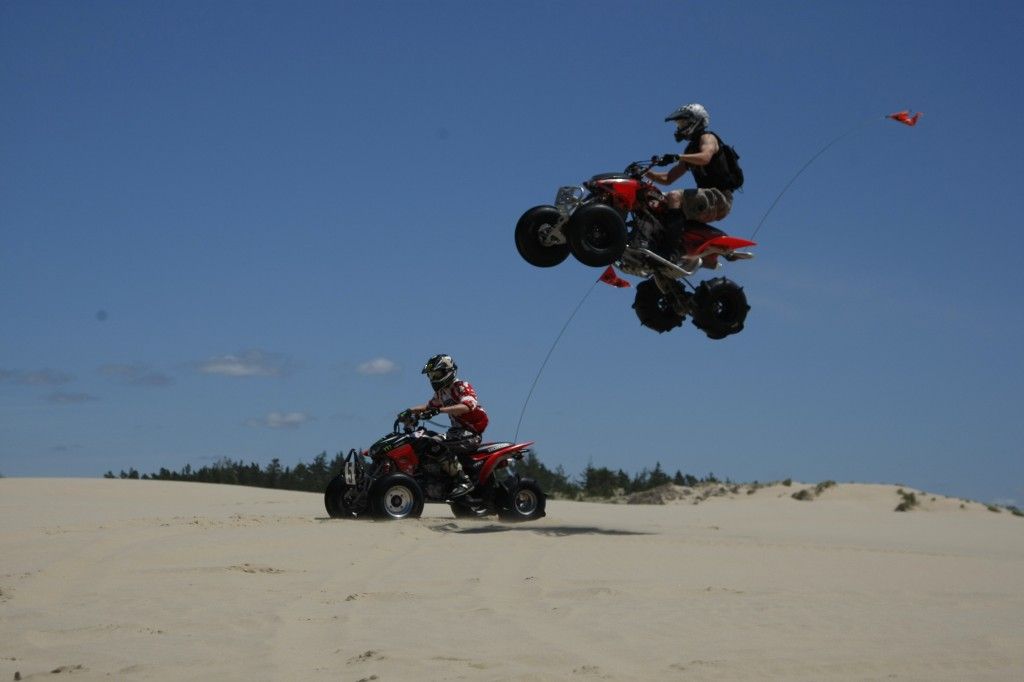
With us you can ride ATVs safely and safely.
Easy road and extreme rides!
Every autotraveller should know this. Expert advice
With a situation where you have to drive on sand, a motorist meets not only on the shore of a reservoir, but also on ordinary dirt roads.
The best feeling in the sand is a car with a 4x4 wheel formula, with wide and grouser tires and a powerful engine with a good margin of cooling system efficiency.
The weight of the car is important, or rather the specific pressure on the ground. The less the car weighs and the larger the diameter and width of the tires installed on it, the better it will make its way through the sand.
However, you can also drive a 2WD car if you follow some rules.
Driving on sand is not an easy task. Therefore, entire amusement parks are based on overcoming sand dunes.
Therefore, entire amusement parks are based on overcoming sand dunes.
Driving on sand is not an easy task. Therefore, entire amusement parks are based on overcoming sand dunes.
Large 4x4 pickup trucks can not only drive down to the water, but also drive along the very edge of the reservoir. The main thing is that water does not get into the engine air intake. After all, then a water hammer in the cylinders is inevitable with serious consequences in the form of a major overhaul or replacement of the motor.
Large four-wheel drive pickups can not only drive to the water, but also ride along the very edge of the reservoir. The main thing is that water does not get into the engine air intake. After all, then a water hammer in the cylinders is inevitable with serious consequences in the form of a major overhaul or replacement of the motor.
First, imagine that the sandy section of the dirt road started unexpectedly.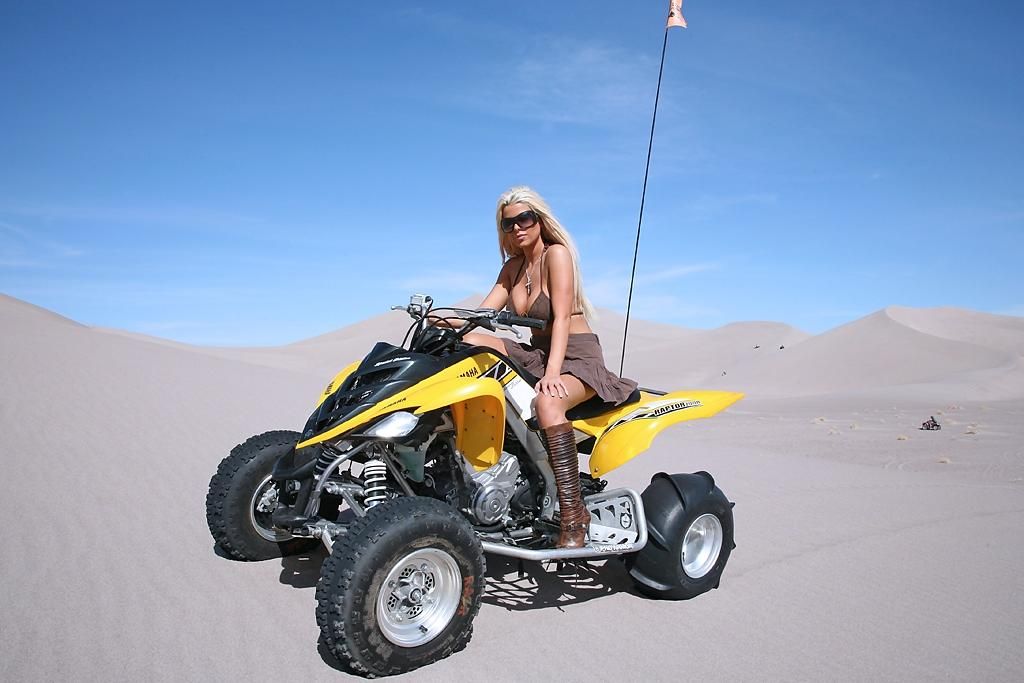 Most drivers will try to skip such a section on the move, and rightly so.
Most drivers will try to skip such a section on the move, and rightly so.
Related materials
Road rally in Morocco: diesel Duster conquers the Sahara
If this does not work out, you will have to use special methods and additional equipment.
 If the tire tread is imprinted in the rut, it is quite possible to drive along it;
If the tire tread is imprinted in the rut, it is quite possible to drive along it; If you know for sure that you will need to overcome the sandy section of the path, then you should prepare in advance.
Related materials
Tire pressure: your norm
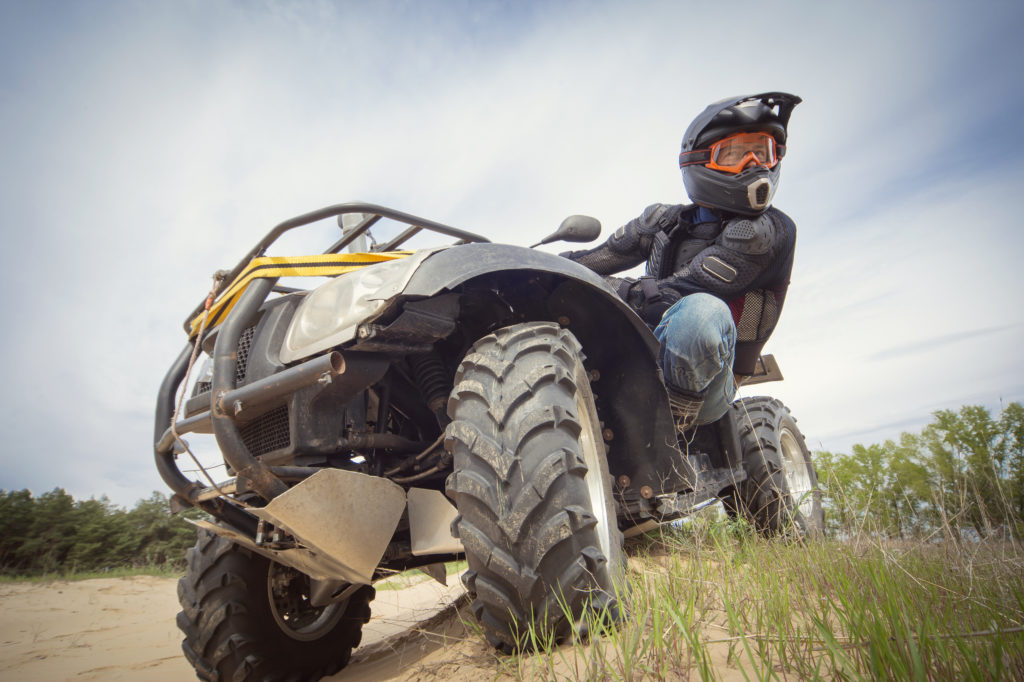 The wheels will sink less and roll better in the sand. It is better to reduce the pressure in all (driving and non-driving) wheels. At the same time, sharp turns of the steering wheel while driving should be avoided in order to avoid disassembly of the tires.
The wheels will sink less and roll better in the sand. It is better to reduce the pressure in all (driving and non-driving) wheels. At the same time, sharp turns of the steering wheel while driving should be avoided in order to avoid disassembly of the tires. The car hardly sinks in wet sand. There is no dust, the coating is hard - almost ideal conditions for travel.
The car hardly sinks in wet sand. There is no dust, the coating is hard - almost ideal conditions for travel.
Related materials
Which jack is better? — expert examination of the ZR
 Sand often adjoins a reservoir, and then you can drag as much water under the wheels from there as you like. The main thing is not to overdo it. And if the edge is waterless, then 10-15 liters of stored water can sufficiently compact the sand under the wheels.
Sand often adjoins a reservoir, and then you can drag as much water under the wheels from there as you like. The main thing is not to overdo it. And if the edge is waterless, then 10-15 liters of stored water can sufficiently compact the sand under the wheels. 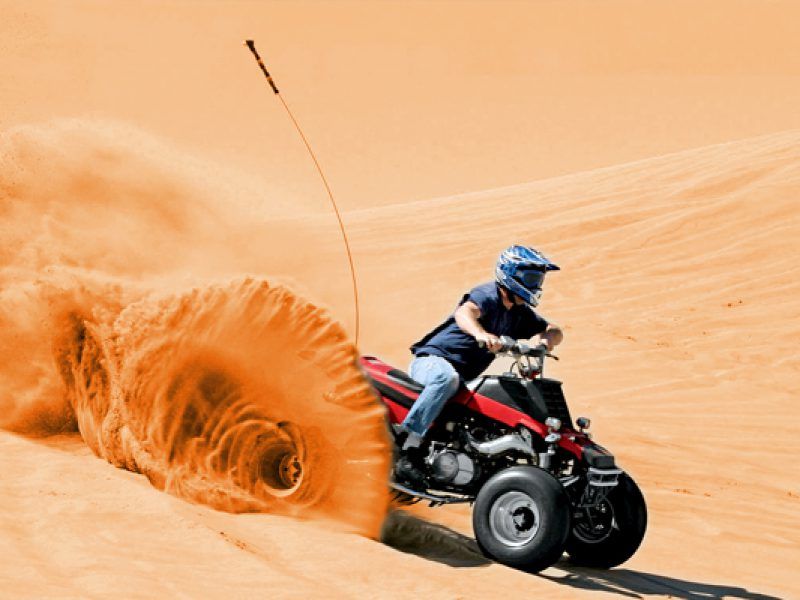
Dust is the main enemy when traveling to desert or semi-desert destinations. It makes it hard to breathe. And it also limits the view very much.
Dust is the main enemy when traveling to desert or semi-desert destinations. It makes it hard to breathe. And it also limits the view very much.
After overcoming significant sandy obstacles, inspect the underside of the car to see if anything has come off. It is also useful to remove the air and cabin filters in order to assess their condition and try to shake out at least some of the dust. Ideally, they should be replaced.
Good luck to everyone. In the comments, share what ways you happened to get out of sandy captivity.
How to drive on sand? 6 driving tricks and the same number of things that you can't do without
